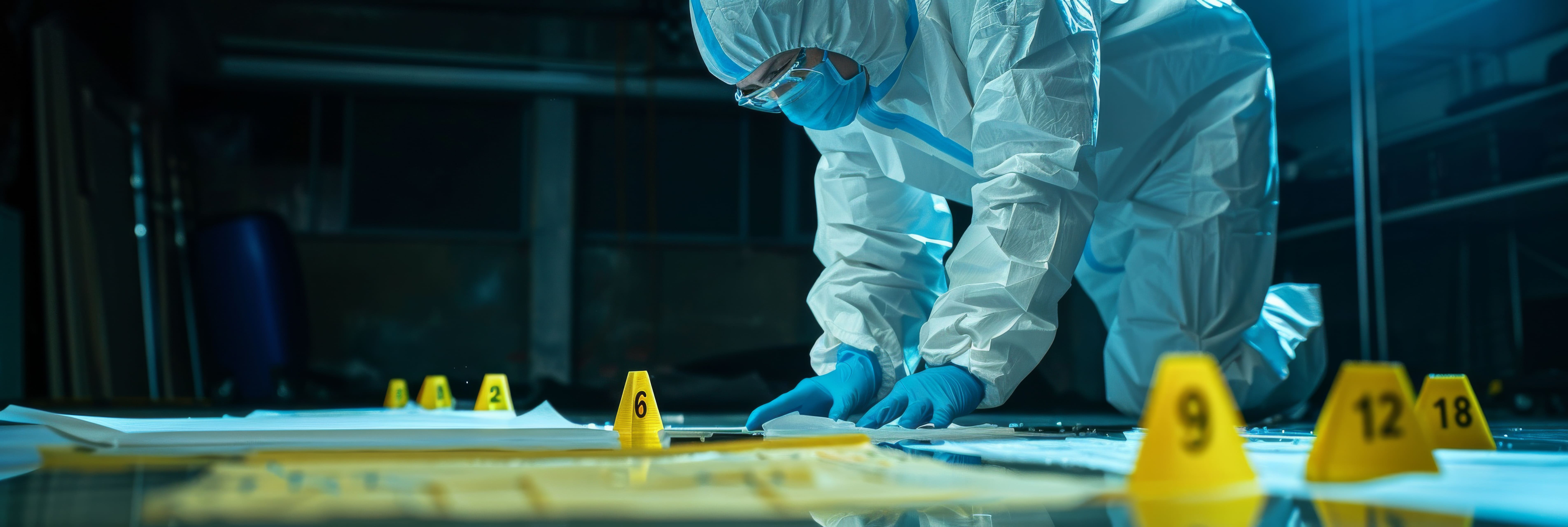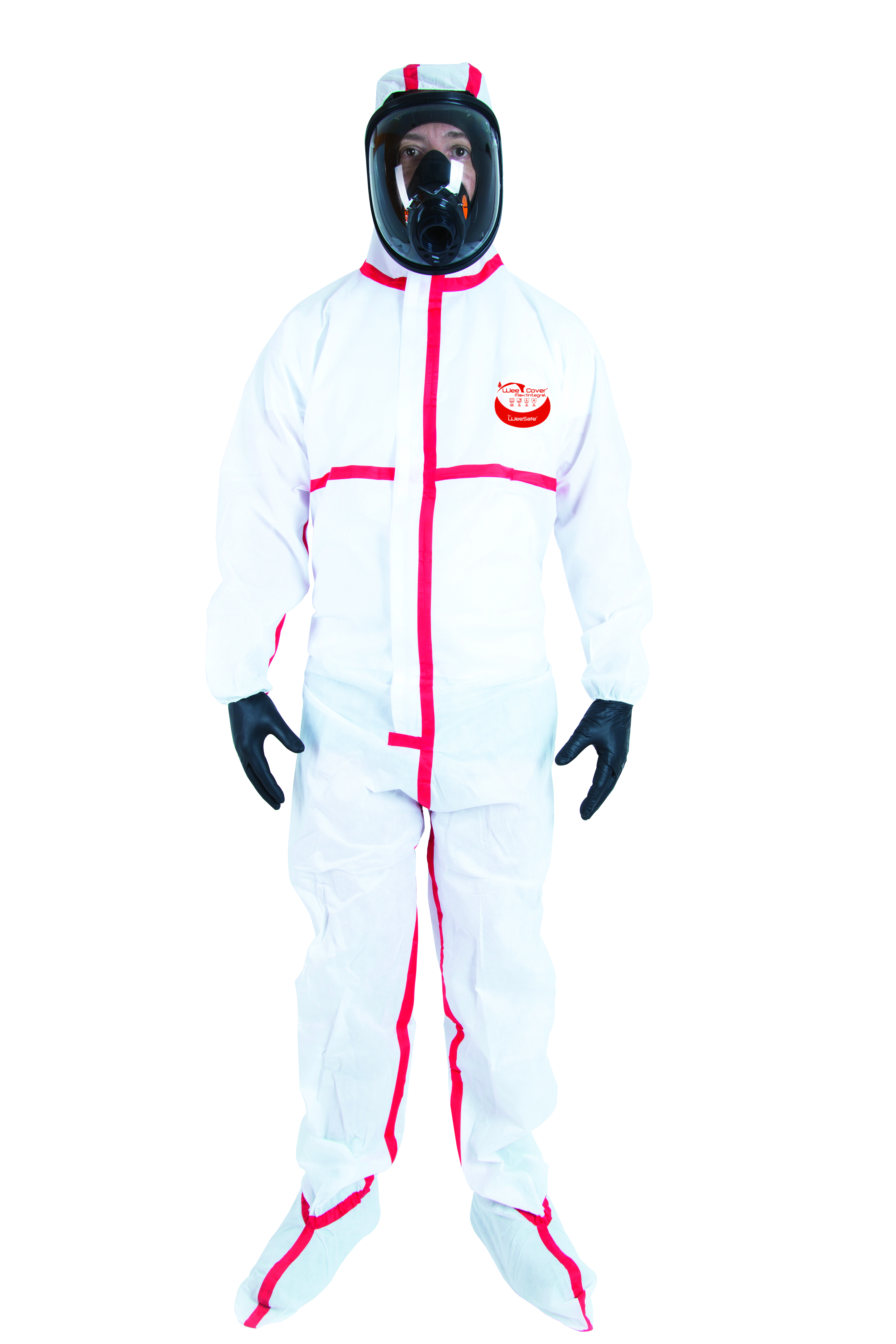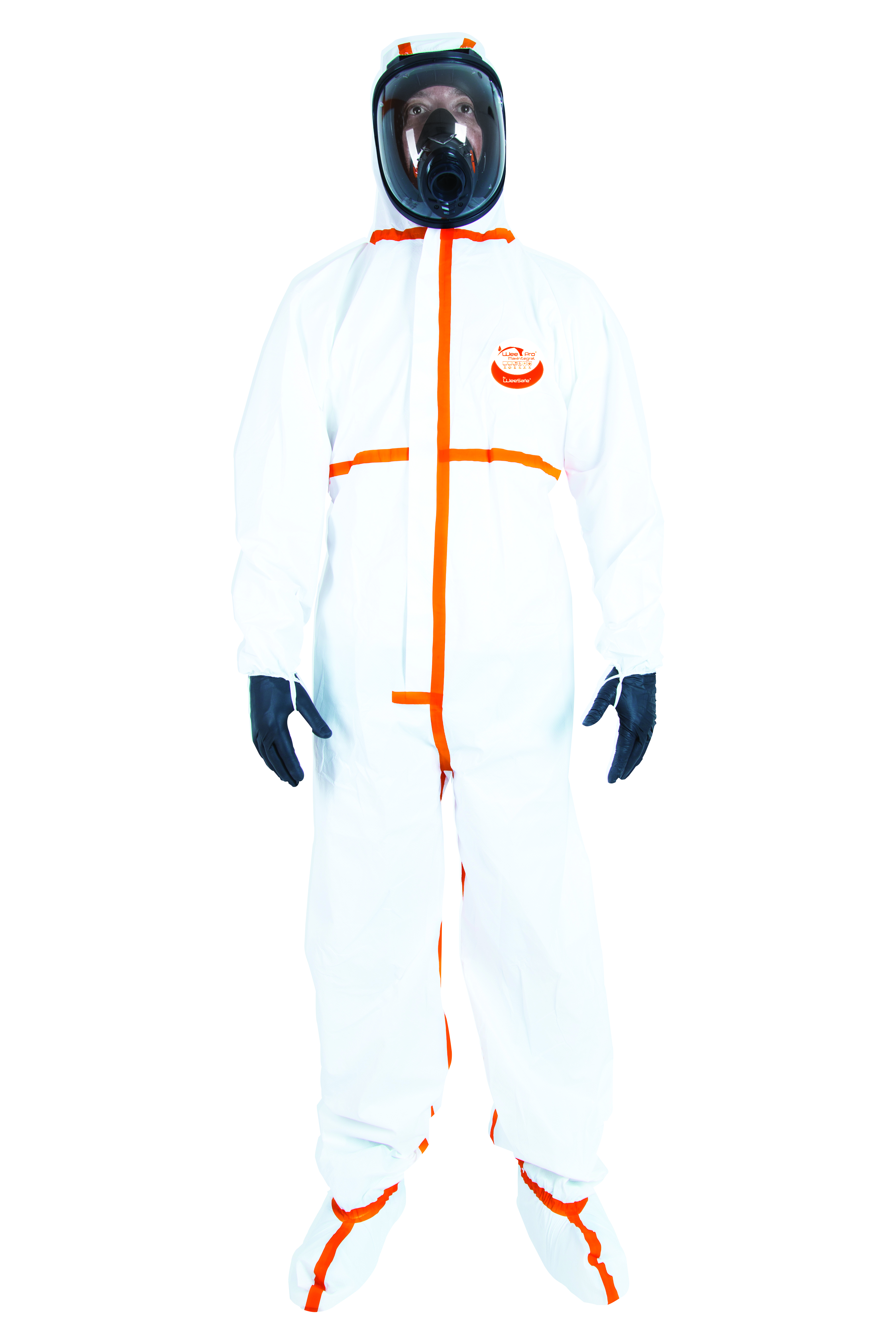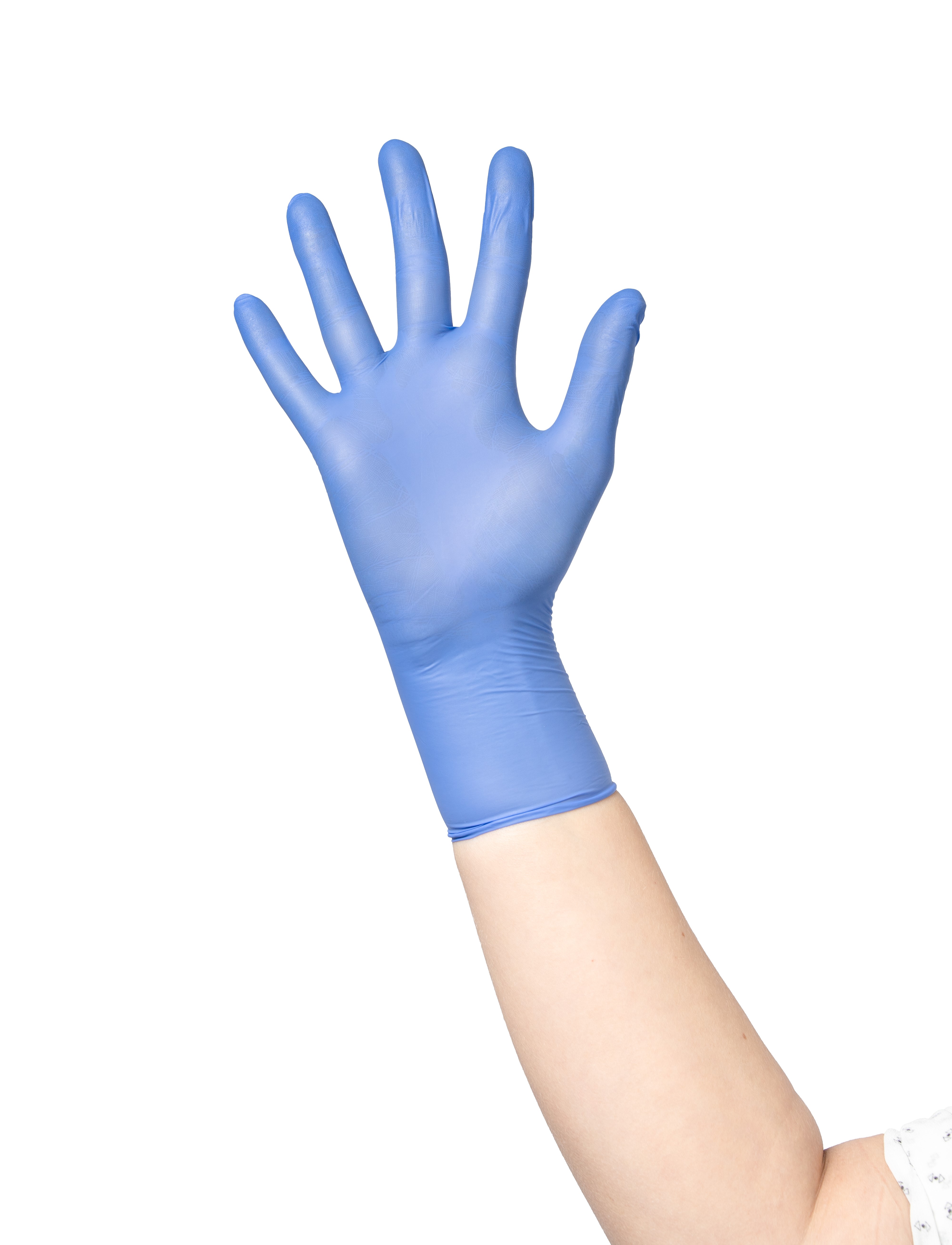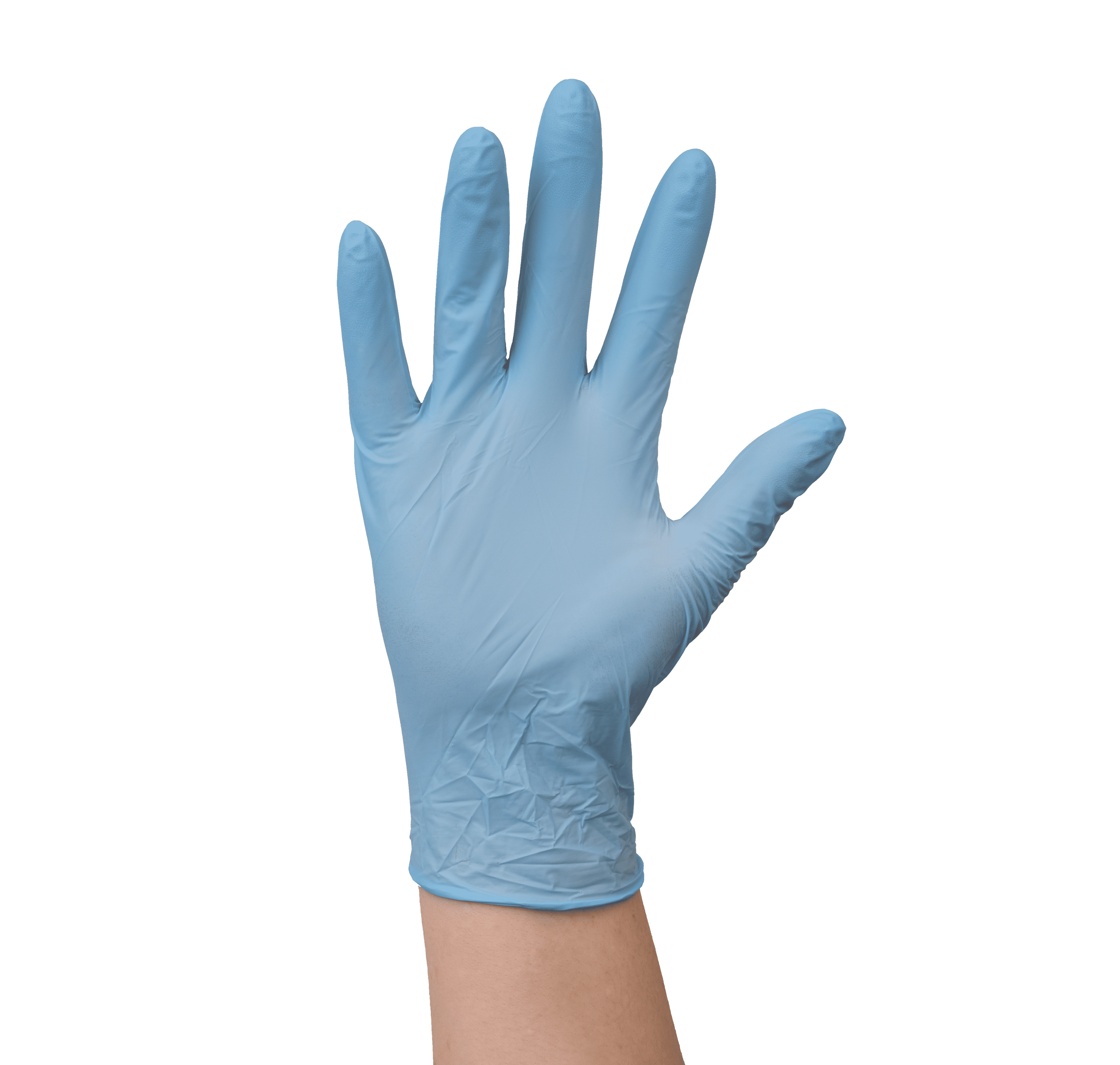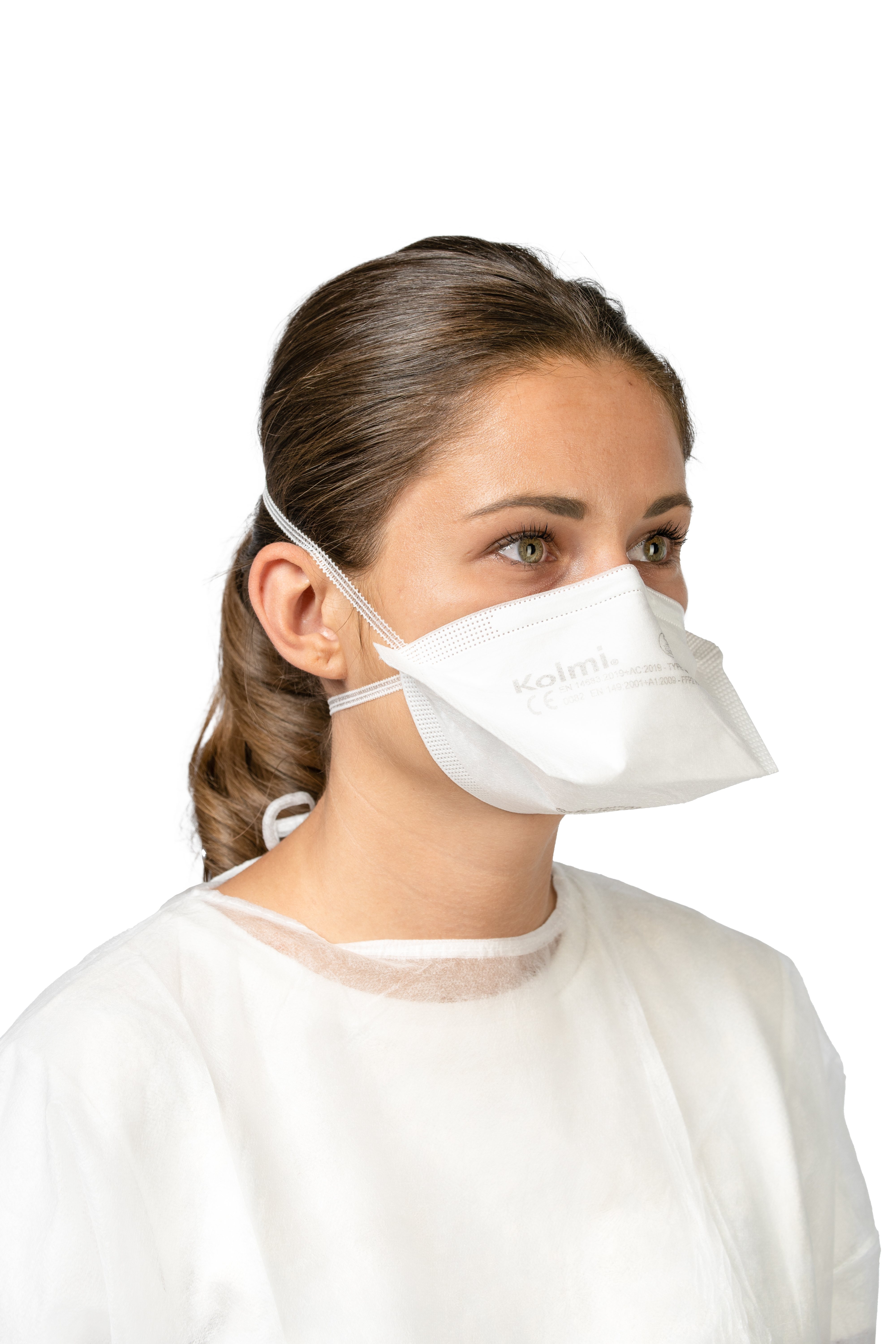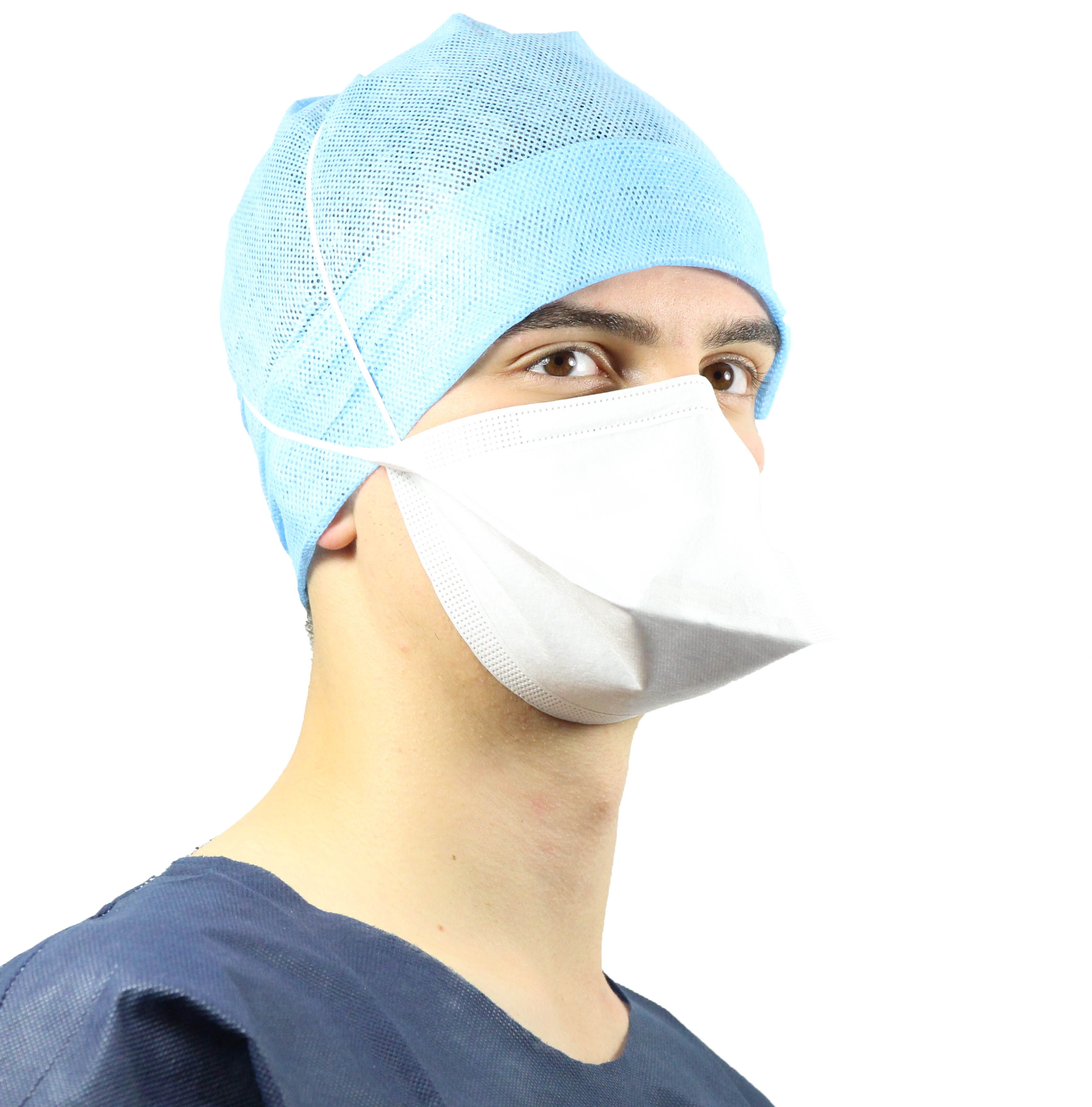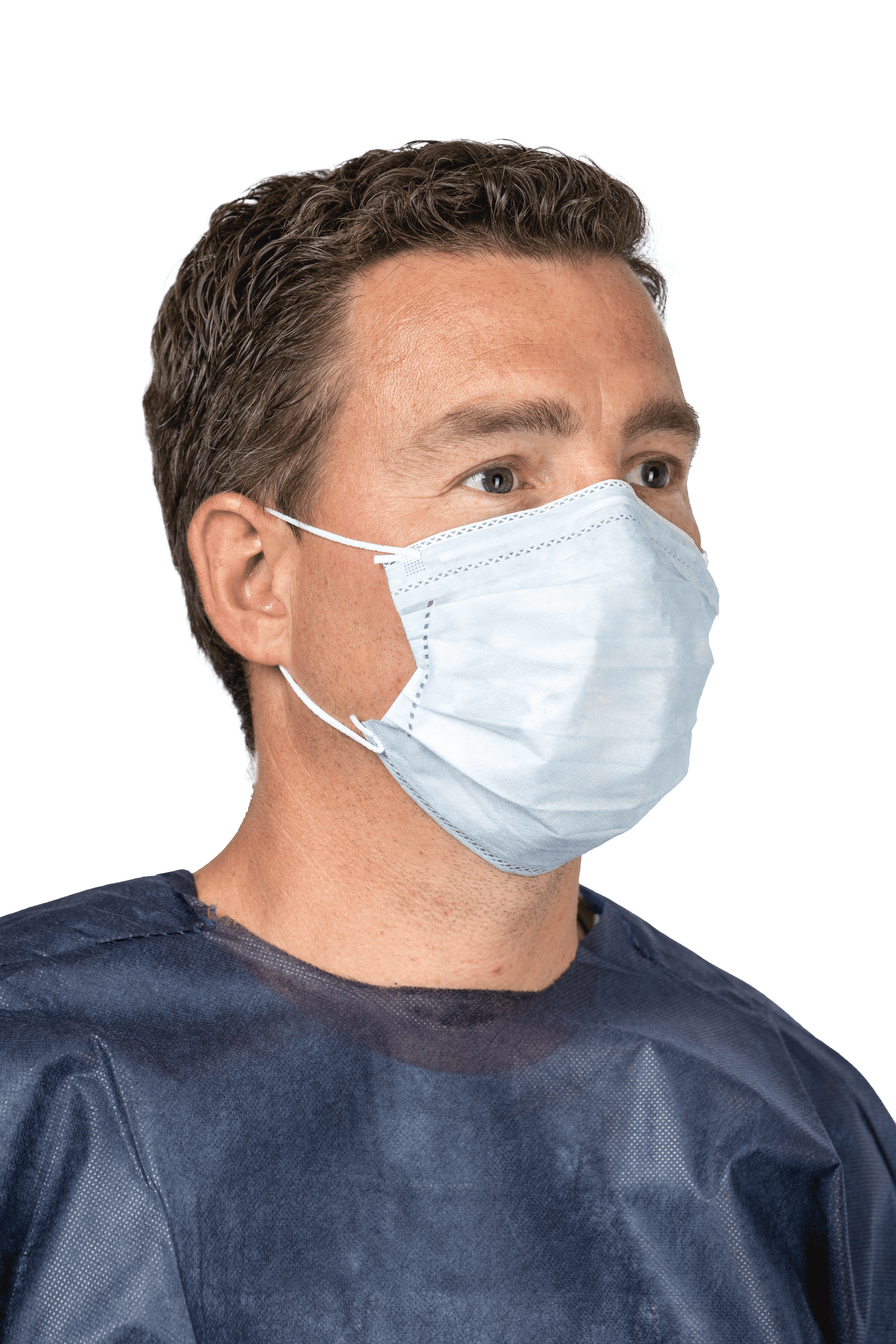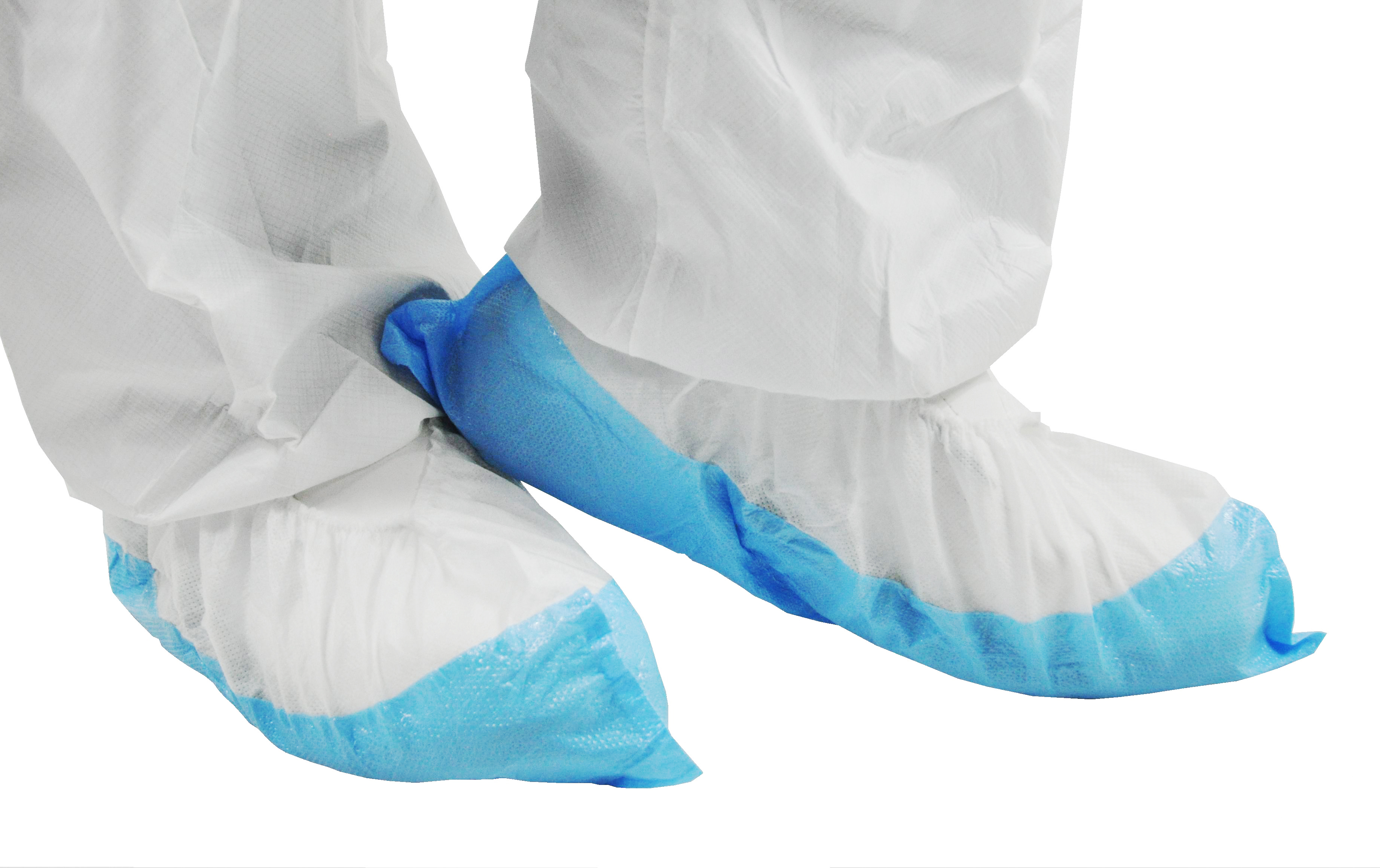Forensic personal protective equipment
Crime scenes expose investigators to various health and safety risks, some of which emerge throughout the investigation. Protective clothing for forensic evidence collection must:
- Protect the evidence collector.
- Prevent crime scene contamination.
- Provide comfort and reduce heat stress.
Our single-use equipment prevents cross-contamination during evidence collection.
Protecting evidence collectors with the right equipment
Forensic investigators are exposed to chemical and biological hazards at crime scenes. It is therefore crucial to protect them with personal protective equipment (PPE) specifically designed for these environments.
This PPE must protect against chemical hazards in the form of dry particles (toxic powders, illicit drugs, explosives) or liquids (solvents, detergents, various chemicals), as well as biological hazards such as blood, saliva, and other organic substances present at crime scenes.
Preserving the integrity of crime scenes
One of the major challenges for investigators is avoiding contamination of the crime scene. PPE must provide a barrier between the evidence collector and the area being inspected.
Our suits, such as the WeeCover Max1, are designed to provide complete protection against fine particles and droplets. They feature waterproof, heat-sealed seams and a zipper with a self-adhesive flap, ensuring maximum waterproofing.
In addition, the materials used are lint-free to prevent any deposit of fibers or cells that could compromise the integrity of the evidence.
Comfort and reduced heat stress
The environments in which investigators work are often confined, which can lead to heat stress, especially with protective equipment that is generally not very breathable.
To limit this stress, we designed the WeeCover Max1 suit with breathable SMS material, providing optimal comfort during long hours of evidence collection. This model allows investigators to fully concentrate on their mission while remaining protected and comfortable.
Suits: complete PPE for forensic science
Coveralls
Full-body suits protect investigators from head to toe against chemical and biological hazards. They are particularly suitable in situations where multiple contaminants are present, such as scenes involving toxic products, biological fluid splashes, or fine microparticles. Breathable models, such as the WeeCover Max1, also provide increased comfort in confined environments.
What PPE is suitable for forensic science?
Forensic science operates in complex environments, such as crime scenes, where biological and chemical risks are omnipresent.
Wearing specific PPE or clothing is essential to ensure the safety of investigators while preserving the integrity of the collected evidence. Special masks, gloves, overshoes, goggles, and coveralls provide protection from hazardous substances while preventing cross-contamination between the investigator and the crime scene.
Gloves
Gloves protect against biological (blood, saliva, biological tissues) and chemical (solvents, detergents) risks. They are essential for protecting operators' skin and preventing cross-contamination between samples and the environment. Durable, standard-compliant single-use models provide optimal protection and are easy to replace between each procedure.
Respiratory protection masks
Masks protect investigators from airborne particles, chemical fumes, microorganisms, and biological contaminants present at a crime scene. They are essential when handling toxic substances, such as explosive powders or chemical vapors, or in the presence of airborne pathogens. Their use ensures respiratory safety while maintaining optimal analytical conditions.
Shoecovers
Overshoes prevent cross-contamination by preventing particles, fibers, or microorganisms from spreading between sensitive areas and other environments. They are essential for preserving the integrity of crime scenes and ensuring evidence collection without external interference.
Goggles
Goggles provide an effective barrier against splashes of biological or chemical liquids, such as blood or solvent splashes. They protect investigators' eyes from irritation and injury, while allowing them to work accurately in potentially hazardous environments.

